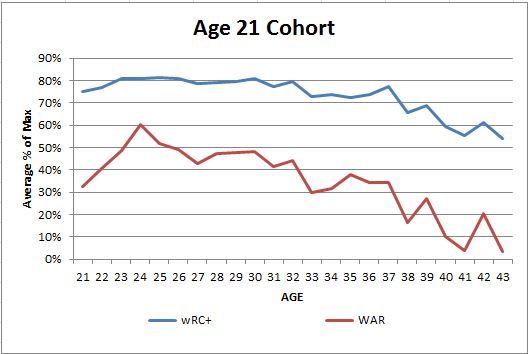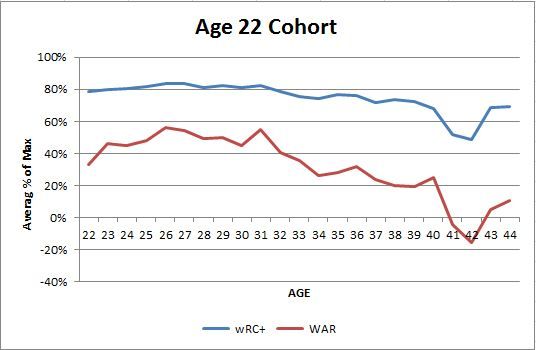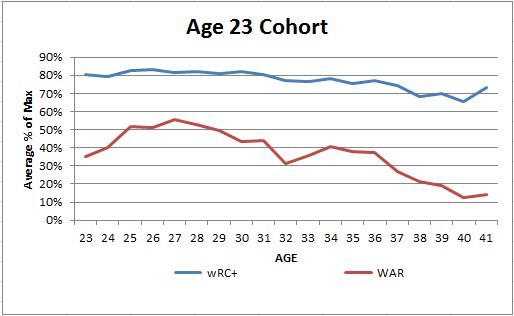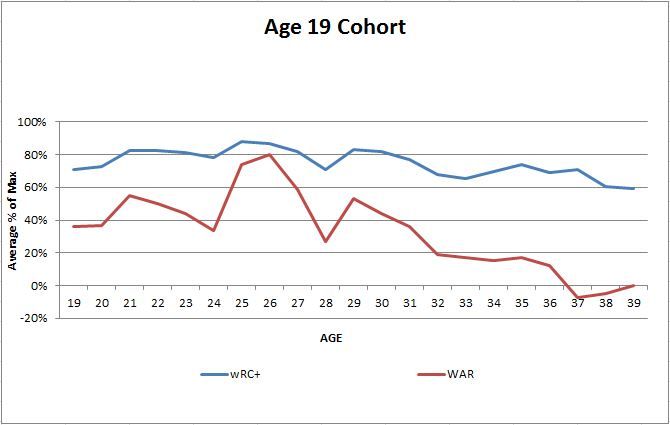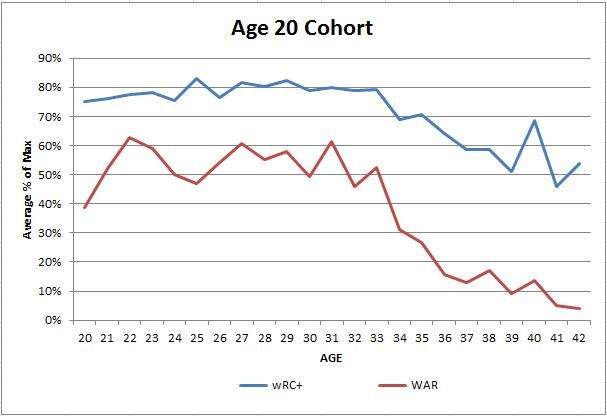Two roads diverged in a wood, and I–
I took the one less traveled by,
And that has made all the difference.
— Robert Frost
There are many things that stand out about this year’s Oakland A’s. Their incredible run differential has reached a near historic level, their breakout star from last year has proven that last season was no fluke, and the top three starters are pitching at incredible levels. They’ve been marauding through the American League like Heisenberg’s nemesis through Janjira. However, there’s one aspect of this team that flies under the radar: of their current 25-man roster, only two players were acquired through the amateur draft – Sonny Gray and Sean Doolittle. The rest were acquired through a mix of trades, free agency, waiver claims, purchases, and even one conditional deal.
Billy Beane made his name a while ago by not being afraid to stray from the pack, and in fact looking for those market inefficiencies that could save him a buck or two with the low payroll A’s. By trading for players who may have disappointed at other spots across Major League Baseball, or claiming players put on waivers, Beane is once again finding talent in the most frugal way possible. So is this a new phenomenon in Oakland? Let’s see what the numbers say. Here’s the acquisitional (who says you can’t invent words?!) breakdown of the Oakland A’s roster the last thirteen years.* This includes any hitters who made at least 100 plate appearances and any pitchers who pitched in at least ten games in addition to this year’s current 25-man roster.
* Why thirteen years? Because, Moneyball, of course!
|
|
A’s Roster Construction Since 2002 |
|
|
|
|
|
|
|
|
|
|
|
|
|
| Year |
AD* |
FA** |
T*** |
AFA^ |
WC^^ |
P^^^ |
CD’ |
R5” |
MD”’ |
| 2014 |
2 |
4 |
13 |
1 |
2 |
2 |
1 |
0 |
0 |
| 2013 |
4 |
4 |
16 |
1 |
4 |
2 |
1 |
0 |
0 |
| 2012 |
7 |
9 |
16 |
2 |
2 |
1 |
0 |
0 |
0 |
| 2011 |
6 |
7 |
17 |
0 |
1 |
1 |
0 |
0 |
0 |
| 2010 |
9 |
7 |
12 |
1 |
2 |
1 |
0 |
0 |
0 |
| 2009 |
11 |
6 |
14 |
1 |
3 |
2 |
0 |
0 |
0 |
| 2008 |
8 |
5 |
16 |
1 |
2 |
3 |
0 |
0 |
0 |
| 2007 |
10 |
5 |
10 |
1 |
4 |
2 |
0 |
0 |
0 |
| 2006 |
8 |
5 |
15 |
0 |
1 |
0 |
0 |
0 |
0 |
| 2005 |
10 |
4 |
15 |
0 |
1 |
0 |
0 |
0 |
0 |
| 2004 |
8 |
7 |
11 |
0 |
1 |
0 |
0 |
0 |
0 |
| 2003 |
8 |
6 |
9 |
2 |
0 |
0 |
1 |
1 |
0 |
| 2002 |
6 |
8 |
16 |
2 |
0 |
0 |
0 |
0 |
1 |
AD*= Players acquired through amateur draft; FA**= Players acquired through free agency; T***= Players acquired through trades; AFA^= Players acquired through amatuer free agency; WC^^= Players acquired through waiver claims; P^^^= Players acquired through purchases; CD’= Players acquired through conditional deals; R5’’= Players acquired through the rule 5 draft; MnD’’’= Players acquired through minor league draft
While the A’s have always built their roster through trades more than through the draft (the only years those numbers were even tied was in 2007 and 2003; every other year there were more players acquired via trade than draft), the trend is becoming more and more evident as of late. On the A’s current 25-man roster, there are a measly two players who the A’s acquired through the amateur draft versus sixteen acquired through trades. Granted, the number acquired through the draft was bound to be a bit smaller so far this season than in previous years since a 25-man roster was used this season, instead of qualified players (again, players who had either 100 plate appearances or ten games in which a player pitched in that given season), which totaled between 27 and 37 in the previous twelve seasons. However, given that the season with the second lowest number of players acquired via the draft was last season, there definitely appears to be a trend here.
Now the question becomes, “how does this compare to the league as a whole?”
Usually Beane is at the forefront of certain trends, so if the A’s roster composition varies greatly from the rest of the league, could it be the start of a league wide trend, especially given the A’s incredible success so far? To answer that question, data on all 30 teams’ roster composition was collected for the 2013 season. Given the same requirements as the previous A’s seasons (100 plate appearances or ten games pitched), how did other rosters across Major League Baseball look last year?
|
|
League Wide Roster Construction in 2013 |
|
|
|
|
|
|
|
|
|
|
| Team |
AD* |
FA** |
T*** |
AFA^ |
WC^^ |
P^^^ |
CD’ |
R5” |
| BOS |
26.47 |
35.29 |
26.47 |
5.88 |
0.00 |
5.88 |
0.00 |
0.00 |
| STL |
65.63 |
12.50 |
18.75 |
0.00 |
0.00 |
3.13 |
0.00 |
0.00 |
| OAK |
12.50 |
12.50 |
50.00 |
3.13 |
12.50 |
6.25 |
3.13 |
0.00 |
| ATL |
33.33 |
10.00 |
33.33 |
6.67 |
16.67 |
0.00 |
0.00 |
0.00 |
| PIT |
28.57 |
21.43 |
42.86 |
3.57 |
0.00 |
3.57 |
0.00 |
0.00 |
| DET |
18.75 |
40.63 |
31.25 |
6.25 |
3.13 |
0.00 |
0.00 |
0.00 |
| LAD |
21.88 |
34.38 |
34.38 |
6.25 |
0.00 |
3.13 |
0.00 |
0.00 |
| CLE |
13.79 |
24.14 |
58.62 |
3.45 |
0.00 |
0.00 |
0.00 |
0.00 |
| TBR |
22.58 |
29.03 |
41.94 |
0.00 |
3.23 |
3.23 |
0.00 |
0.00 |
| TEX |
29.03 |
32.26 |
19.35 |
12.90 |
0.00 |
3.23 |
0.00 |
3.23 |
| CIN |
40.00 |
23.33 |
23.33 |
10.00 |
3.33 |
0.00 |
0.00 |
0.00 |
| WSN |
37.50 |
25.00 |
31.25 |
3.13 |
3.13 |
0.00 |
0.00 |
0.00 |
| KCR |
33.33 |
13.33 |
36.67 |
6.67 |
3.33 |
6.67 |
0.00 |
0.00 |
| BAL |
25.81 |
12.90 |
35.48 |
3.23 |
9.68 |
6.45 |
0.00 |
6.45 |
| NYY |
25.81 |
35.48 |
22.58 |
9.68 |
3.23 |
0.00 |
0.00 |
3.23 |
| ARI |
16.13 |
25.81 |
45.16 |
9.68 |
3.23 |
0.00 |
0.00 |
0.00 |
| LAA |
37.84 |
29.73 |
21.62 |
5.41 |
5.41 |
0.00 |
0.00 |
0.00 |
| SFG |
33.33 |
36.67 |
10.00 |
6.67 |
10.00 |
3.33 |
0.00 |
0.00 |
| SDP |
31.43 |
20.00 |
40.00 |
0.00 |
2.86 |
0.00 |
2.86 |
2.86 |
| NYM |
31.58 |
31.58 |
13.16 |
13.16 |
10.53 |
0.00 |
0.00 |
0.00 |
| MIL |
39.39 |
36.36 |
12.12 |
3.03 |
6.06 |
3.03 |
0.00 |
0.00 |
| COL |
36.36 |
27.27 |
21.21 |
12.12 |
3.03 |
0.00 |
0.00 |
0.00 |
| TOR |
24.32 |
21.62 |
45.95 |
2.70 |
2.70 |
2.70 |
0.00 |
0.00 |
| PHI |
35.00 |
37.50 |
20.00 |
7.50 |
0.00 |
0.00 |
0.00 |
0.00 |
| SEA |
27.27 |
30.30 |
30.30 |
9.09 |
0.00 |
0.00 |
0.00 |
3.03 |
| MIN |
33.33 |
33.33 |
12.12 |
6.06 |
9.09 |
0.00 |
0.00 |
6.06 |
| CHC |
11.43 |
42.86 |
22.86 |
11.43 |
8.57 |
0.00 |
0.00 |
2.86 |
| CHW |
30.00 |
33.33 |
20.00 |
10.00 |
6.67 |
0.00 |
0.00 |
0.00 |
| MIA |
30.30 |
24.24 |
39.39 |
6.06 |
0.00 |
0.00 |
0.00 |
0.00 |
| HOU |
15.00 |
22.50 |
40.00 |
5.00 |
10.00 |
0.00 |
0.00 |
7.50 |
That’s a lot of numbers, so let’s take a step back and look at some of the numbers that stick out. First of all, instead of using raw totals, percentages have been used to even out the variance among how many players each team had qualify for this roster construction study. It’s also important to note that the highest and lowest percentage in each column has been bolded (this was used only for the three primary ways of acquiring players – the amateur draft, free agency, and trades). One may think of the old adage, “there’s more than one way to skin a cat” when looking at the top of the league. Apparently this adage holds true for baseball roster construction, as well as cat mutilation, as the St. Louis Cardinals – you know, that franchise that has won four of the last ten NL pennants with a pair of titles, and has the self-proclaimed best fanbase in baseball – has gone the complete opposite direction as the A’s to build their squad, relying more on the amateur draft than any other team in baseball, and doing so with great success. Then there are last year’s World Series champions, the Boston Red Sox, who were among the league leaders in players brought in through free agency.
One consistent, league-wide trend was that teams at the bottom of the league standings had far more players qualify for the 100 plate appearance/ten games pitched minimums. This is a bit of a “chicken or the egg” type observation, where the cause can sometimes be confused with the effect. There are several teams among the league’s cellar dwellers that went through numerous players throughout the season in an attempt to find effective players (the “throw the spaghetti at the wall and see what sticks” approach Jonah Keri has referenced on multiple occasions). This would be your Marlins, Astros, and Cubs. However, there are also teams among the lower tier of the standings that were forced into more personnel choices due to injuries; your Phillies, Blue Jays, and Angels. Whatever the reason, it is noticeable that nearly all the teams at the top of the standings at the end of the year have fewer players qualified for the 100 plate appearance/ten games pitched minimums thanks to good health and a clear vision – two staples of successful franchises (interestingly enough the one team that was an exception to this rule in 2013 was the Boston Red Sox; however, given their disaster of a 2012 season, it’s not as surprising to see that they tinkered a bit with their roster throughout the season).
The data supports what many baseball fans would already think, which is that the teams with higher payrolls usually are among the most reliant on free agents, and, in order to compete, the smaller market teams need to find other ways to build their rosters. For example, the top eight teams who built through free agency were: the Cubs, the Tigers, the Phillies, the Giants, the Brewers, the Yankees, the Red Sox, and the Dodgers. Of those eight, the Tigers, Philles, Giants, Yankees, Red Sox, and Dodgers make up the top six teams by payroll in 2014. The Cubs are in the middle of a complete roster overhaul, and Theo Epstein seems to be constructing a team built for flipping at the deadline for future prospects, so cheap free agents are a prime commodity. The Brewers are the odd team out, and would make for an interesting case study.
On the flip side, the top nine teams created by trading players were: the Indians, the A’s, the Blue Jays, the Diamondbacks, the Pirates, the Rays, the Astros, the Padres, and the Marlins. Of those nine, the A’s Pirates, Rays, Astros, Padres, and Marlins made up the six lowest teams by payroll in 2013; the Indians were not far off, with only the 21st biggest payroll of 2013; and the Blue Jays and Diamondbacks both have super aggressive front offices that prefer to bring in players via (usually poor) trades.
There is, of course, the caveat that while this study looks at general roster construction it does not have the nuance to differentiate between a team that is loaded with free agents that are big money free agents (like the Yankees and Red Sox) versus a team loaded with replacement level free agents (like the Cubs). If each player’s salary was totaled by how he was acquired, and then turned into percentages of roster construction again, this would show us how much each team is truly investing into each method of roster construction from a financial point of view. This could be used to compliment Jonah Keri and Neil Payne’s recent study that looked at roster construction. In their piece, Keri and Payne look at roster construction through the lens of a stars and scrubs roster versus a balanced roster. Although there might be some discrepancy based on the arbitrary 100 plate appearance and ten games pitched cut-offs, the data likely wouldn’t be vastly skewed from the current results.
Todd Boss, of Nationals Arm Race did an interesting study somewhat similar to this one, looking at the core players (the 5-man starting rotation, the setup and closer, the 8 out-field players, and the DH for AL teams) for the playoffs teams in 2013, and put the teams into four different categories of roster construction: draft/development, trade major leaguers, trade prospects, and free agency. The results were similar to what was found here, and help to support the idea that the arbitrary cut-offs of 100 plate appearances and 10 games pitched didn’t have a negative impact on the study. The only slightly different result was that Boss found the Rays to be relying more on the draft than on trades.
Having looked at the league-wide breakdown for roster construction last season, let’s take a look at roster construction from an historical perspective. To make a long story short, when Curt Flood took on Major League Baseball, and eventually the Supreme Court, in his fight to turn down a trade to Philadelphia (who can blame him?), he opened up the Floodgates (couldn’t help myself) for the eventual implementation of free agency in baseball. So, has successful (being judged by the extremely arbitrary “ringz” perspective) roster construction changed since then? Let’s take a look with yet another chart (Marshall Eriksen would be proud), this time looking at the past 40 World Series winners, and how each team was constructed.
|
|
Roster Construction of World Series Winners Since 1974 |
|
|
|
|
|
|
|
|
|
|
|
|
|
|
|
| Year |
Team |
AD* |
FA** |
T*** |
AFA^ |
WC^^ |
P^^^ |
CD’ |
R5” |
MD”’ |
DC+ |
XD++ |
| 2013 |
BOS |
26.47 |
35.29 |
26.47 |
5.88 |
0.00 |
5.88 |
0.00 |
0.00 |
0.00 |
0.00 |
0.00 |
| 2012 |
SFG |
37.50 |
37.50 |
15.63 |
6.25 |
3.13 |
0.00 |
0.00 |
0.00 |
0.00 |
0.00 |
0.00 |
| 2011 |
STL |
39.39 |
33.33 |
21.21 |
3.03 |
0.00 |
3.03 |
0.00 |
0.00 |
0.00 |
0.00 |
0.00 |
| 2010 |
SFG |
31.25 |
50.00 |
15.63 |
3.13 |
0.00 |
0.00 |
0.00 |
0.00 |
0.00 |
0.00 |
0.00 |
| 2009 |
NYY |
21.88 |
43.75 |
12.50 |
15.63 |
0.00 |
6.25 |
0.00 |
0.00 |
0.00 |
0.00 |
0.00 |
| 2008 |
PHI |
29.63 |
44.44 |
14.81 |
3.70 |
3.70 |
0.00 |
0.00 |
3.70 |
0.00 |
0.00 |
0.00 |
| 2007 |
BOS |
20.00 |
46.67 |
23.33 |
0.00 |
3.33 |
6.67 |
0.00 |
0.00 |
0.00 |
0.00 |
0.00 |
| 2006 |
STL |
16.13 |
41.94 |
32.26 |
0.00 |
0.00 |
3.23 |
0.00 |
6.45 |
0.00 |
0.00 |
0.00 |
| 2005 |
CHW |
14.81 |
40.74 |
40.74 |
0.00 |
3.70 |
0.00 |
0.00 |
0.00 |
0.00 |
0.00 |
0.00 |
| 2004 |
BOS |
9.09 |
39.39 |
30.30 |
0.00 |
12.12 |
6.06 |
3.03 |
0.00 |
0.00 |
0.00 |
0.00 |
| 2003 |
FLA |
10.00 |
30.00 |
50.00 |
10.00 |
0.00 |
0.00 |
0.00 |
0.00 |
0.00 |
0.00 |
0.00 |
| 2002 |
LAA |
35.71 |
28.57 |
14.29 |
7.14 |
14.29 |
0.00 |
0.00 |
0.00 |
0.00 |
0.00 |
0.00 |
| 2001 |
ARI |
10.00 |
50.00 |
20.00 |
6.67 |
0.00 |
3.33 |
0.00 |
0.00 |
0.00 |
0.00 |
10.00 |
| 2000 |
NYY |
25.00 |
31.25 |
31.25 |
9.38 |
3.13 |
0.00 |
0.00 |
0.00 |
0.00 |
0.00 |
0.00 |
| 1999 |
NYY |
20.00 |
36.00 |
32.00 |
12.00 |
0.00 |
0.00 |
0.00 |
0.00 |
0.00 |
0.00 |
0.00 |
| 1998 |
NYY |
16.00 |
44.00 |
28.00 |
12.00 |
0.00 |
0.00 |
0.00 |
0.00 |
0.00 |
0.00 |
0.00 |
| 1997 |
FLA |
6.45 |
29.03 |
38.71 |
16.13 |
0.00 |
0.00 |
0.00 |
0.00 |
3.23 |
0.00 |
6.45 |
| 1996 |
NYY |
12.12 |
27.27 |
39.39 |
18.18 |
0.00 |
3.03 |
0.00 |
0.00 |
0.00 |
0.00 |
0.00 |
| 1995 |
ATL |
40.00 |
40.00 |
16.00 |
4.00 |
0.00 |
0.00 |
0.00 |
0.00 |
0.00 |
0.00 |
0.00 |
| 1994 |
BOO |
XX |
XX |
XX |
XX |
XX |
XX |
XX |
XX |
XX |
XX |
XX |
| 1993 |
TOR |
29.63 |
37.04 |
33.33 |
0.00 |
0.00 |
0.00 |
0.00 |
0.00 |
0.00 |
0.00 |
0.00 |
| 1992 |
TOR |
44.00 |
20.00 |
24.00 |
0.00 |
0.00 |
0.00 |
0.00 |
8.00 |
0.00 |
4.00 |
0.00 |
| 1991 |
MIN |
33.33 |
29.63 |
33.33 |
0.00 |
0.00 |
0.00 |
0.00 |
3.70 |
0.00 |
0.00 |
0.00 |
| 1990 |
CIN |
32.00 |
12.00 |
52.00 |
0.00 |
0.00 |
0.00 |
0.00 |
4.00 |
0.00 |
0.00 |
0.00 |
| 1989 |
OAK |
32.14 |
32.14 |
32.14 |
3.57 |
0.00 |
0.00 |
0.00 |
0.00 |
0.00 |
0.00 |
0.00 |
| 1988 |
LAD |
32.14 |
35.71 |
28.57 |
0.00 |
0.00 |
3.57 |
0.00 |
0.00 |
0.00 |
0.00 |
0.00 |
| 1987 |
MIN |
33.33 |
11.11 |
51.85 |
3.70 |
0.00 |
0.00 |
0.00 |
0.00 |
0.00 |
0.00 |
0.00 |
| 1986 |
NYM |
30.77 |
11.54 |
50.00 |
7.69 |
0.00 |
0.00 |
0.00 |
0.00 |
0.00 |
0.00 |
0.00 |
| 1985 |
KCR |
38.46 |
19.23 |
26.92 |
11.54 |
0.00 |
3.85 |
0.00 |
0.00 |
0.00 |
0.00 |
0.00 |
| 1984 |
DET |
42.86 |
17.86 |
28.57 |
3.57 |
0.00 |
7.14 |
0.00 |
0.00 |
0.00 |
0.00 |
0.00 |
| 1983 |
BAL |
32.14 |
21.43 |
32.14 |
10.71 |
0.00 |
3.57 |
0.00 |
0.00 |
0.00 |
0.00 |
0.00 |
| 1982 |
STL |
19.23 |
3.85 |
65.38 |
7.69 |
0.00 |
3.85 |
0.00 |
0.00 |
0.00 |
0.00 |
0.00 |
| 1981 |
LAD |
43.48 |
17.39 |
21.74 |
8.70 |
0.00 |
8.70 |
0.00 |
0.00 |
0.00 |
0.00 |
0.00 |
| 1980 |
PHHI |
39.29 |
14.29 |
39.29 |
3.57 |
0.00 |
3.57 |
0.00 |
0.00 |
0.00 |
0.00 |
0.00 |
| 1979 |
PIT |
32.00 |
12.00 |
40.00 |
16.00 |
0.00 |
0.00 |
0.00 |
0.00 |
0.00 |
0.00 |
0.00 |
| 1978 |
NYY |
18.18 |
13.64 |
63.64 |
4.55 |
0.00 |
0.00 |
0.00 |
0.00 |
0.00 |
0.00 |
0.00 |
| 1977 |
NYY |
18.18 |
13.64 |
63.64 |
4.55 |
0.00 |
0.00 |
0.00 |
0.00 |
0.00 |
0.00 |
0.00 |
| 1976 |
CIN |
28.00 |
N/A |
44.00 |
28.00 |
0.00 |
0.00 |
0.00 |
0.00 |
0.00 |
0.00 |
0.00 |
| 1975 |
CIN |
33.33 |
N/A |
45.83 |
20.83 |
0.00 |
0.00 |
0.00 |
0.00 |
0.00 |
0.00 |
0.00 |
| 1974 |
OAK |
25.00 |
N/A |
37.50 |
29.17 |
0.00 |
8.33 |
0.00 |
0.00 |
0.00 |
0.00 |
0.00 |
#DC+= Players acquired through free agent draft compensation; #XD++= Players acquired through the expansion draft
The first note that needs to be made is regarding the 1997 Marlins and 2001 Diamondbacks. Both rosters had skewed roster construction due to how soon after the team’s inception they were able to win a championship. The Marlins have by far the lowest reliance on the amateur draft, and the Diamondbacks have tied for the highest reliance on free agents, but both of these numbers were driven up (or down) by the limited time for drafting and moving along prospects before their championships.
After accounting for the 2001 Diamondbacks season, the steady rise of reliance on free agents since the mid-seventies is notable – up until three years ago that is. It’s hard to tell whether baseball is undergoing an actual “grass roots” movement, with teams relying less and less on big market free agents to succeed, or if this is simply a three-year blip in the radar, but it is certainly notable that the last three World Series winners have had notably lower reliance on free agents than the previous seven years’ winners. The 2011 Cardinals, 2012 Giants, and 2013 Red Sox have not, however, relied on trades, but instead their farm systems more so than other winners of this millennium (not including the 2002 Angels).
In fact, excluding the fluky 2003 Marlins, there has not been a World Series winner as reliant on trades as the 2013 A’s (50 percent) since the mid-eighties Twins and Mets. What’s even more troubling for the A’s is that there hasn’t been a team to use the draft and free agency combined as little as the 2013 A’s since the 1982 Cardinals, a team built during the dawn of free agency.
When judging by championships, in fact, the picture of baseball as a sport in which you need to be in a big market, with the ability to sign big name free agents becomes unfortunately evident. The roster composition of nearly all of the World Series winners this century is quite similar to that first group of teams mentioned above as big market teams built through free agency. This is no surprise to any real baseball fans, however. Look at the cities that have hosted World Series parades since the Yankees’ dynasty of the nineties began. Sure, there are the success stories in Florida and Arizona, but other than that it’s a who’s who of big market teams. While the Cardinals play themselves off as plucky little underdogs, their payroll was the eleventh largest in baseball last year, almost exactly twice that of the A’s.
That’s why this year’s A’s team could be so special. If they are able to continue their regular season success, and finally make the breakthrough they have been struggling so much to make in recent years, they could continue the recent trend of teams moving away from a strictly free agent diet to fulfill their championship dreams. Of course, this has been the case for a couple of years in Oakland now, and it hasn’t happened yet. However, with the top three in the A’s rotation looking as good as any in baseball right now, baseball’s secret superstar at third, and the fact that it is the 25th anniversary of the last A’s World Series title, suddenly it doesn’t seem that unlikely that the A’s could make ole Bobby Frost proud this October.
